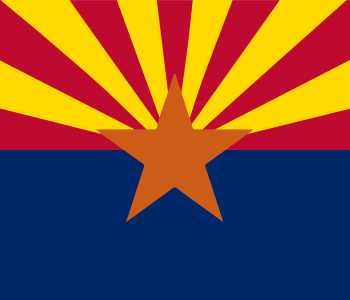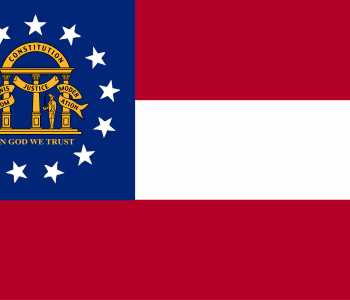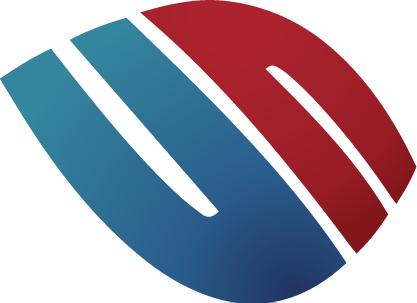Managing Your Small Business Finances

As a small business owner, you may be an expert in your field. Whether you are a contractor, a restaurant owner, a photographer, or own an e-commerce site, you may have the right mix of skills, experience, and passion to be the best at what you do.
But, if you can't manage money and keep your finances in order, your business may be doomed to fail.
Finances and bookkeeping are how you manage your company resources. It's a scorecard to track business success. If you aren't making money and turning a profit, then your business isn't successful.
Managing your finances shouldn't be overwhelming. With a little work, you can take control and put your business on solid financial footing. We'll go over the basics in this guide and show you how can start managing your finances today.
Getting Started with Small Business Finances
Accounting documents are the tools you use to manage your business. These documents are the pulse of your business. They let you track the progress of your finances, so you know the health of your business.
Your financial documents are a record of your business. They can be used to forecast future work, so you can set a budget and plan for growth. They provide insight, so you can identify problems before they happen and better plan your business strategy.
The documents you create here will help in filing taxes for your business. You'll track expenses, record assets, collect revenue, and calculate profitability. At a minimum, these are the documents you'll need for your small business:
The Foundation of Finance - the Balance Sheet
A balance sheet tracks and reports on assets. It gives you a look at your financial standing - a snapshot of the business. Your balance sheet is based on a single equation:
• Assets = Liabilities + Equity
Everything your business owns (the assets) must be paid for. You pay for assets by borrowing money and taking on debt (liability) or accepting an investor in the business (providing shareholder equity).
Your assets might include cash, equipment, investments, or property. Your liability might be a loan from the bank. Rent, tax, and dividends are also included in the liability.
The revenue your company generates beyond the liability (your debt) goes into the equity owned by the stakeholder's and owners.
The balance sheet calculates the value of your business. Managing an accurate balance sheet, so that the total assets is equal to your liability and equity, is critical
Keeping Your Business Healthy - the Cash Flow Statement
Your cash flow statement tracks the health of your company.
The success or failure of any business is based on money. Does your business take in more cash or money that it spends? The cash flow tracks the flow of revenue and expenses for the business.
Income could be receiving payments from an invoice or selling products or services. Expenses could include payroll, purchasing inventory, rent, and your overhead costs like marketing. Typically, the cash flow statement will track expenses and income over time - a week or a month.
Depending on the business, you might see shifts in income. Some months you may take in more income and other months you may have more expenses than revenue. Your business should always have available cash to pay for expenses. If you don't, and you have a cash flow statement that is often in the red, you have a problem.
Tracking Profit and Loss - the Income Statement
The income statement, also known as a profit and loss statement, works a little like the cash flow statement. It tracks the revenue and expenses of the business. It focuses not just on cash, but on four areas - revenue, expenses, gains, and losses.
Revenue could include operating revenue generated by core business activities, or secondary activities like interest earned on an investment. Gains include other income generated by the business like the sale of assets. These are typically one-time activities that produce income outside the core business.
Expenses is the money spent on the core business activities. Payroll, for example, is an expense, as is general and administrative expenses (SG&A). Losses are one-time expenses outside of the core business activities. Money lost on the sale of an asset, for example, is a loss for the business.
Your income statement is used to measure the profitability of your business. With it, you can track net profit over time. Think of it like a scorecard to see how well you are doing.
Looking Ahead - the Revenue Forecast
A revenue forecast is an important tool for business planning. If you are considering a new employee, or taking out a business loan, the revenue forecast will help you predict if you can afford the new expense.
Creating a revenue forecast isn't easy, and many small businesses struggle to create a realistic projection of expenses and revenue.
Think of the revenue forecast like an educated estimate of future business. How much income will your company generate? Once you have that estimate, consider how much you can and will spend on the business in the next year. Do research on both expenses and revenue. Be honest and where possible - use data to support your projections.
Once you have a revenue forecast, it will be easier to keep a budget over the year. You'll have an idea of how much money you will make and what your expenses will be.
Creating Financial Documents for Your Business
Every business and industry are different, and you may need additional documents beyond the ones listed here.
Contractors use a job costing report to track and assign expenses on a contract job. This helps them make a profit for every job. It is a critical tool the owner will use to manage finances.
Take the time to research your industry and know what other documents you may need.
Managing Your Taxes and Protecting Your Business
Now that you have the financial documents for your small business under control, it's time to consider taxes.
Many small business owners struggle to fulfill their tax obligations. Failing to file your taxes can lead to consequences - criminal charges or worse. With your financial documents in order, managing your tax obligations should be easier
Your first step should be to apply for a Federal tax identification number. Also known as an employer identification number (EIN), it helps the IRS and government track your business. Not every business will need an EIN. You'll discover if you need one when you apply online.
There are four types of taxes that your business may need to pay. Depending on the business, you may not need to pay them all. We'll go over each one, so you can be prepared and protect your business.
Income Tax
Just like an individual, a business needs to file an annual income tax return. Your payments will be based on the revenue you received over the year. The tax form you use depends on the structure of your business - a partnership, a corporation, an S-corporation, an LLC, or a sole proprietorship.
The taxes your business pays are known as "pay-as-you-go" taxes. Your business will have to pay taxes each quarter, depending on your estimated earnings.
Employment Taxes
You'll have to pay taxes for the employees that work for you. These taxes include social security, federal income tax withholdings, federal unemployment, and Medicare.
Even if you don't have other employees, you'll have to pay these taxes for self-employment. Keep in mind, self-employment taxes and income taxes are also "pay-as-you-go" taxes. You should pay them and provide documents and tax forms as needed.
State and Local Taxes
Taxes can vary widely from state and municipality. You may also be required to pay additional fees or follow financial regulations. You should be aware of you state and local tax obligations before it comes time to file.
Review your state and local tax requirements and regulations before opening a business. You can find information on your area with U.S. Small Business Administration. Contact them or a local resource for help.
Business Loans and Your Credit Score
No matter what business you own, there may come a time when you'll need credit. You may need to purchase property, buy or lease equipment, or take out a small business loan.
Your loan or borrowing options will be contingent on your personal and business credit rating. These scores are based on how well you manage your finances.
We'll look at how business credit works. You'll discover strategies you can use to increase your borrowing capability.
Understanding Your Credit
As a business owner, lending institutions will want to know your personal credit rating as well as the rating for your business. They see your credit rating as proof of your ability to pay back a loan. With a higher credit rating, you will have access to more loan options.
With that in mind, you should take steps to increase your personal credit rating.
Pay all your loans and loan payments in full and on time. Keep spending on credit cards low, and make sure to pay off cards regularly. Loan defaults, collections, foreclosures, and bankruptcy can have a negative impact on your credit rating.
Monitor your credit rating for problems. When you do see a problem, make sure you address it quickly. There are also steps you can take to increase your credit rating. Increasing your credit rating, for example, without accessing the credit will give your score a boost.
Once you have an EIN, your business will also have a credit score. Credit agencies will access information on the accounts held by your business. This could include business credit cards, vendors, suppliers, and banks.
Like your personal credit rating, you should always monitor your business credit rating. Make sure to pay bills and debt on time and in full. Avoid issues that can hurt your FICO score like bankruptcy or defaulting on a loan.
If you are careful with your score, you and your business will be ready when you need to access credit.
Collateral and Personal Guarantees
Before providing a loan, a lender may require collateral or a personal guarantee to reduce their risk.
A personal guarantee is a signed document that allows the lender to leverage the assets you own to fulfill a defaulted loan. Typically, this is up to a fixed amount or for the full amount of the loan plus interest, depending on the guarantee. These can be risky for you as the business owner. Lenders could seek repayment through your retirement savings, the college funds for your children, or personal property.
Collateral leverages a specific asset to guarantee the loan. Typically, this is a high-value asset like a home or property. If you default on the loan, the lender can repossess the asset to repay the loan.
Take the time to consider your options before signing a loan with collateral or a personal guarantee. They can be risky for you and your family.
Loan Options for Your Small Business
Even as the credit market has tightened for small businesses, there are loan options available for companies with sound financials.
These options include:
• Term Loans: These offer a fixed repayment time and a fixed or variable interest rate. The terms of the loan can be as short as one year or as long as 20 years.
• Short-Term Loans: These are a great solution when you have an immediate need for quick cash. They are like term loans but have a repayment time as short as three months.
• Equipment Financing: If you need to purchase equipment like computers or machinery, equipment financing may be your best option. Typically, the amount you borrow will depend on the equipment, with the equipment providing the collateral.
• Lines of Credit: Lenders will provide your business a set amount of funds that can use as needed. The funds used will be repaid with additional and accumulating interest.
• SBA Loans: With an SBA loan, the U.S. Small Business Administration will guarantee a percentage of the loan for your business. This is a method the SBA can use to help you secure a loan from another institution.
Stay Ahead of Your Loan
Before you sign for a loan, make sure you understand the terms. Look at the amortization schedule, which will determine your loan payments. Some loan payments will be a fixed and rigidly scheduled amount, while others will change depending on the terms.
It's also a good idea to conduct a loan performance analysis. This will show you how quickly you can expect a return for the loan - when your business will turn a profit. Depending on the analysis, you may decide a loan isn't the best option for your business.
Getting Started with Small Business Finances
Hopefully, you have a better understanding of small business finances and can see what is required of a successful business. It's time to put these lessons into action.
Even with these lessons, keeping track of finances can be overwhelming - especially if you are managing everything manually. Lucky for you, there are great resources out there that can help.
Working with an Accountant
Hiring an accountant may not be for everyone, but it may be the best option for your business.
A professional accountant can review your documents as needed, provide expert advice for financial decisions, and help with taxes.
Before selecting an accountant, think about how they will operate. What finances will the accountant manage, and what responsibilities will you have? Even if you hand over most of the work to the accountant, finances are still your responsibility. This is your business. Go over the books with the accountant to stay ahead of problems and plan for success.
Software Tools for Managing Finances
Many software products can take the guesswork out of small business finances. They can deliver reports and automate bookkeeping with just a few clicks. Many cloud-based systems can be downloaded and running in a few minutes. They can even integrate with other systems to further reduce your workload.
If you work in a specialized industry that requires specific financial reports, it's a good idea to purchase a software system based on your industry. You may find general use software easier to use, but the general system may leave gaps in your financial reports.
A Final Word on Small Business Finances
Building your small business financial system doesn't need to happen overnight, but it does need to happen. Plan out our financial processes step-by-step and make steady progress toward your goal.
Many other small business owners have gone through the same process. Ask for help from local resources and follow their advice.
With every step, you and your business will be better positioned for success!







